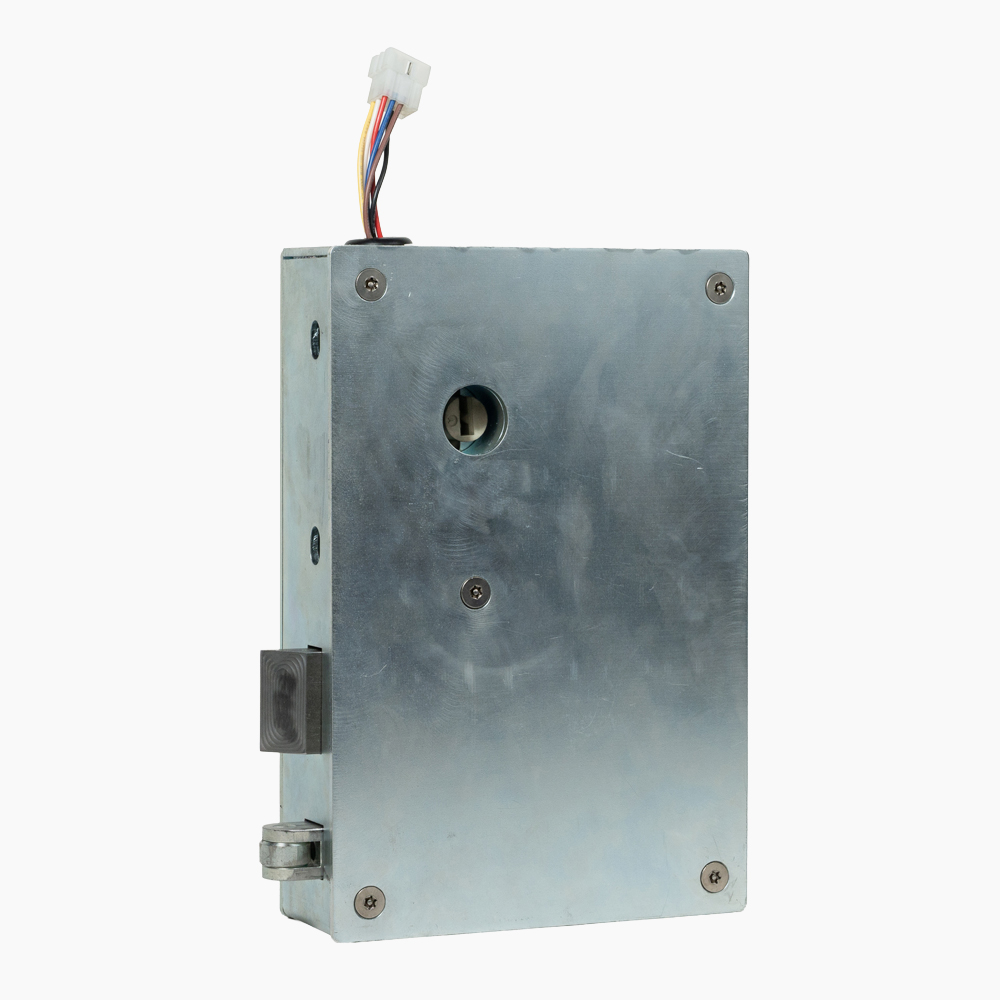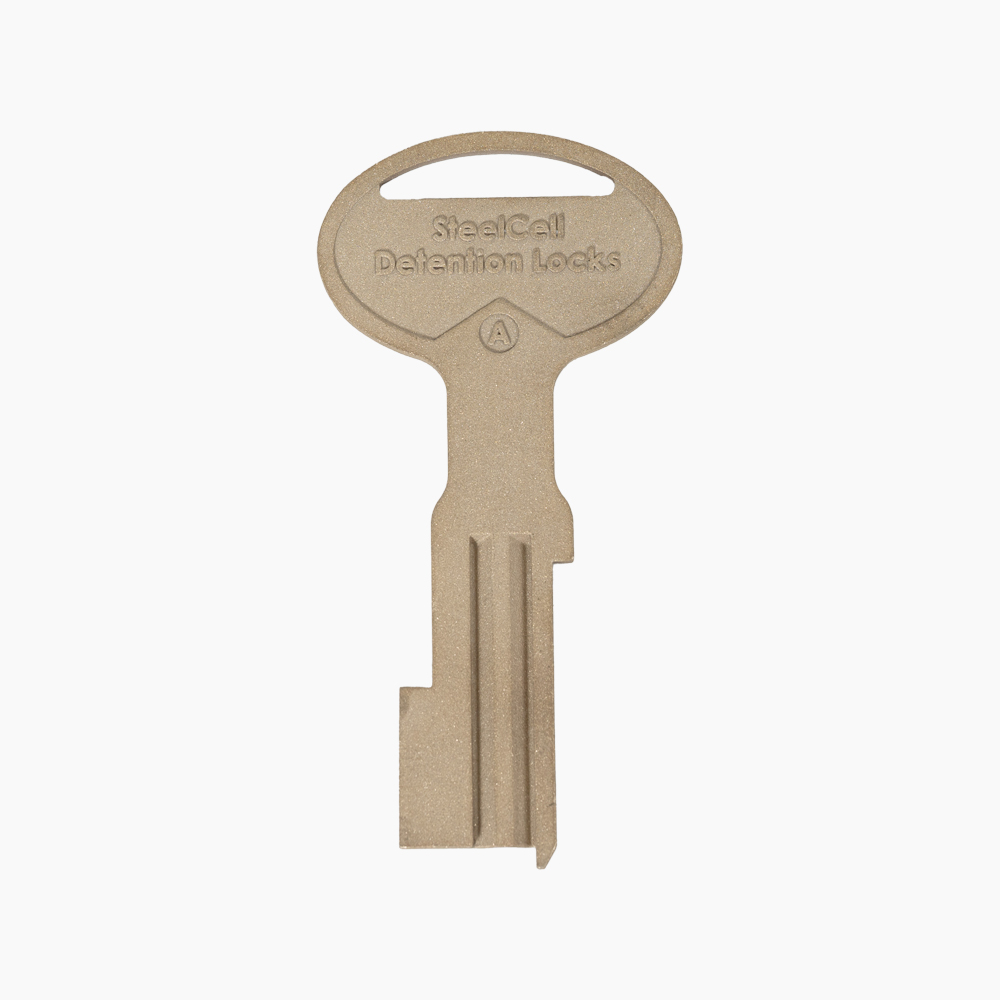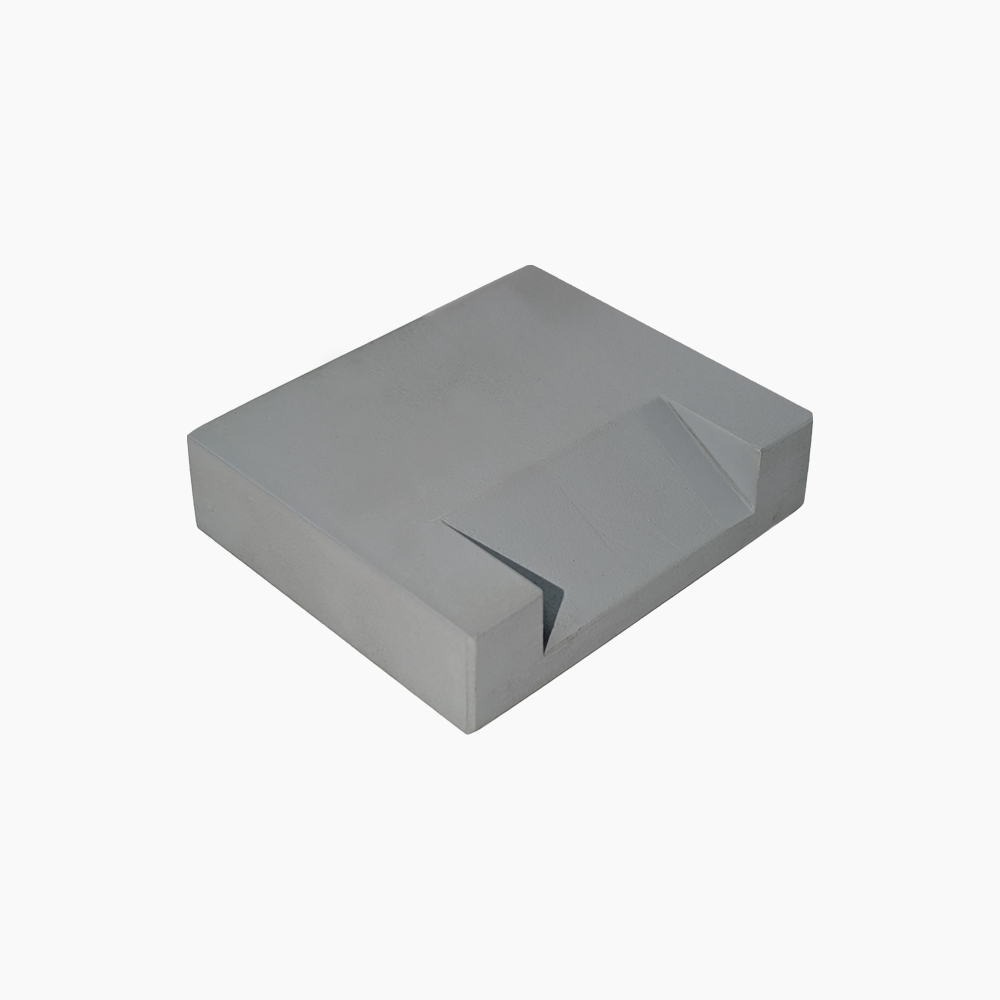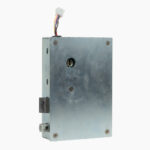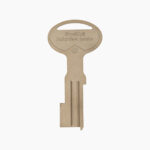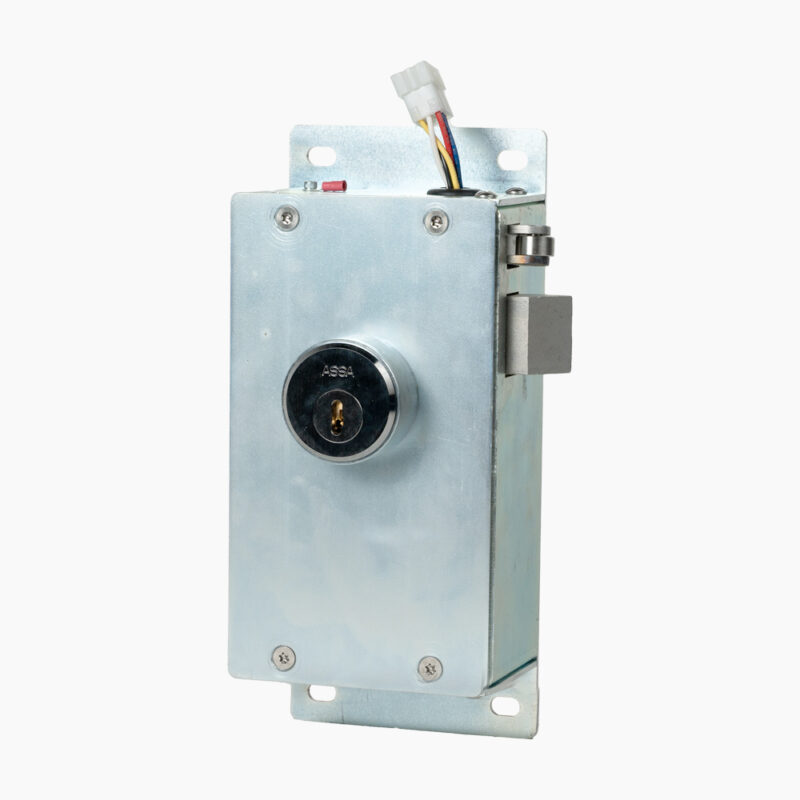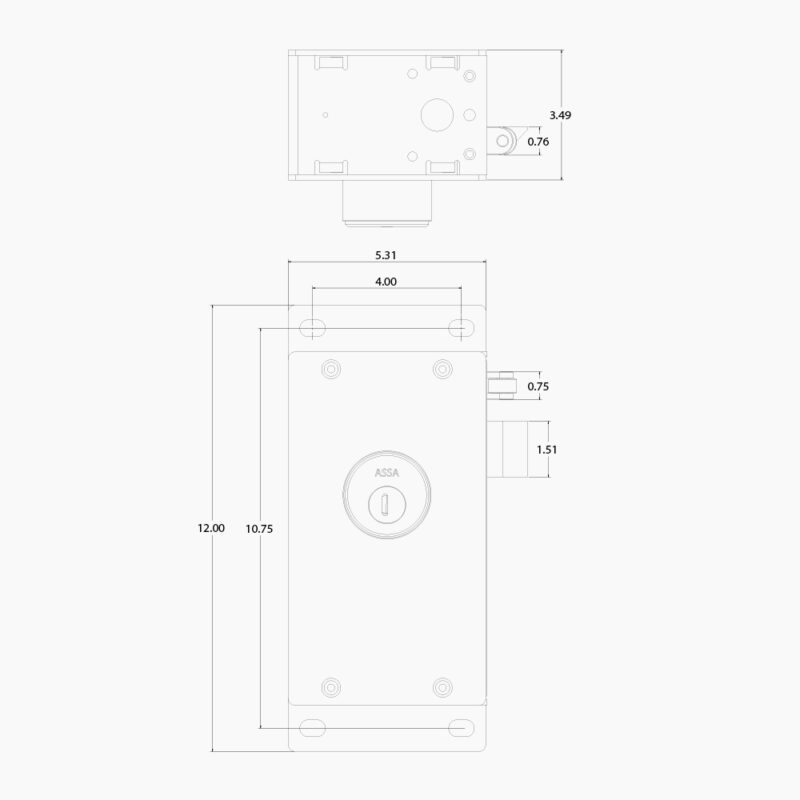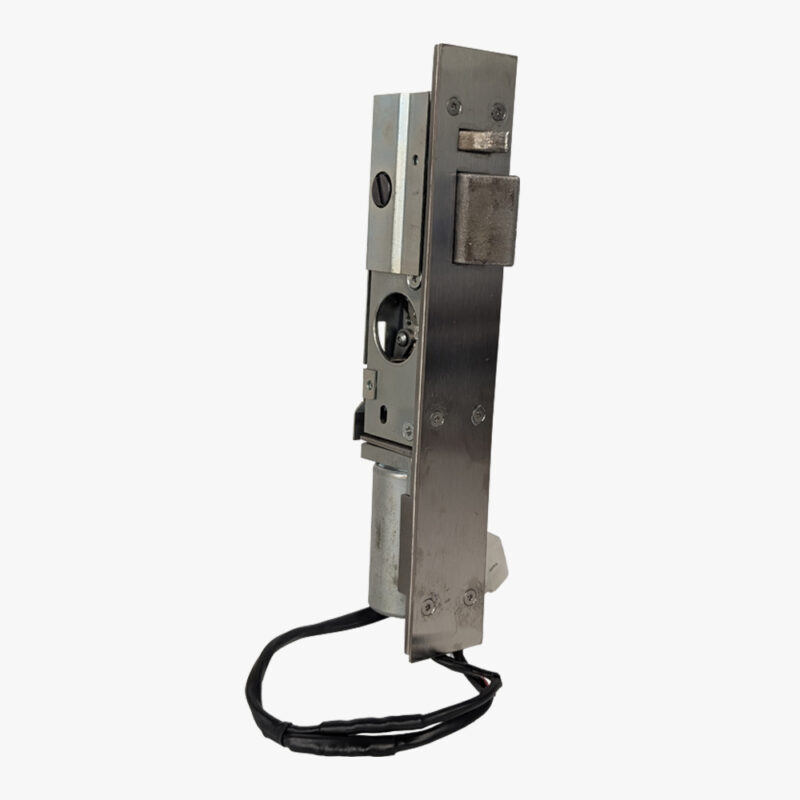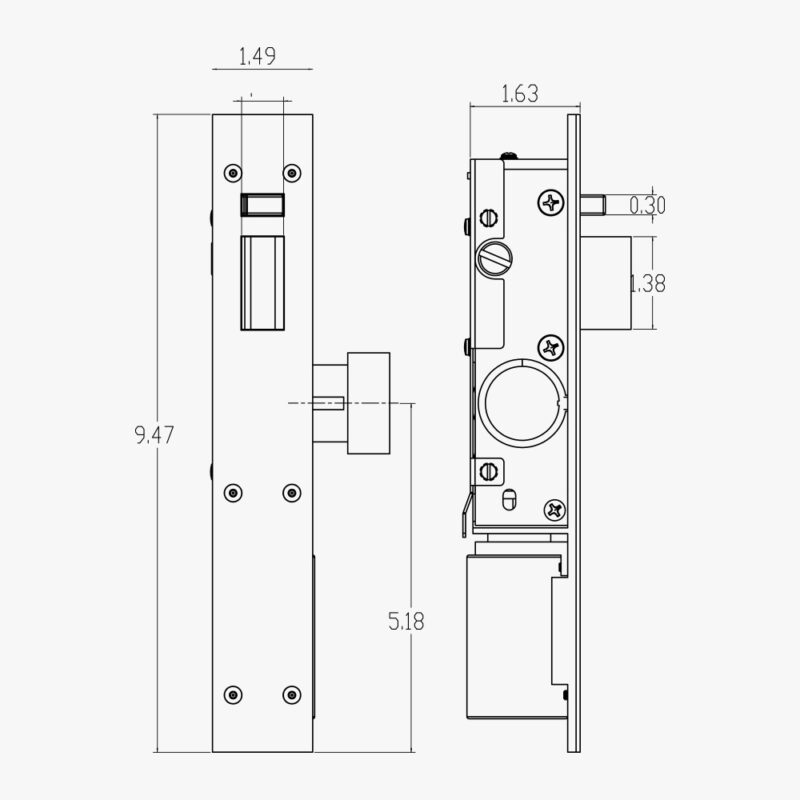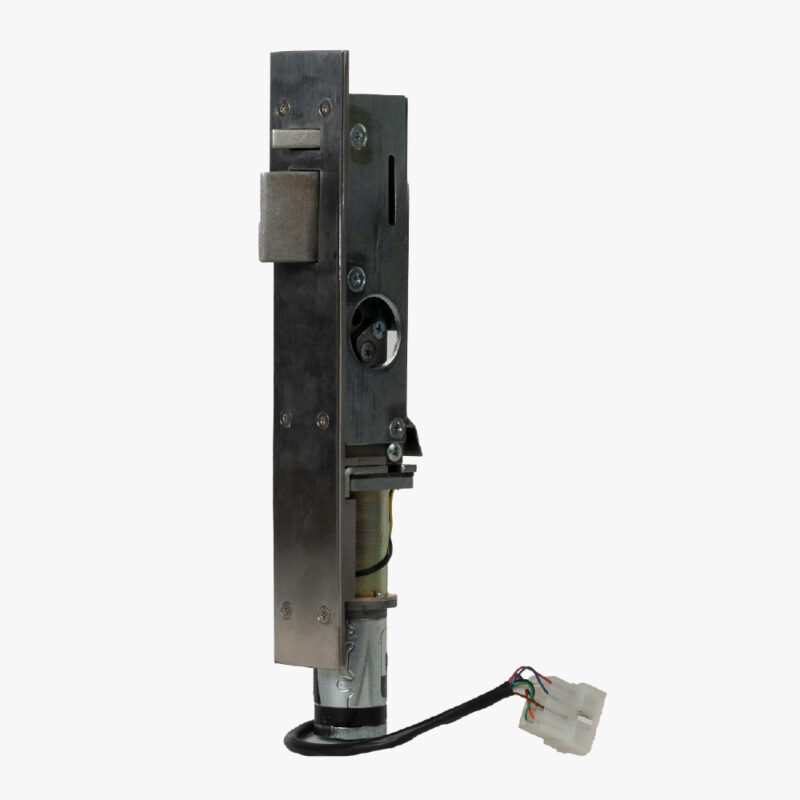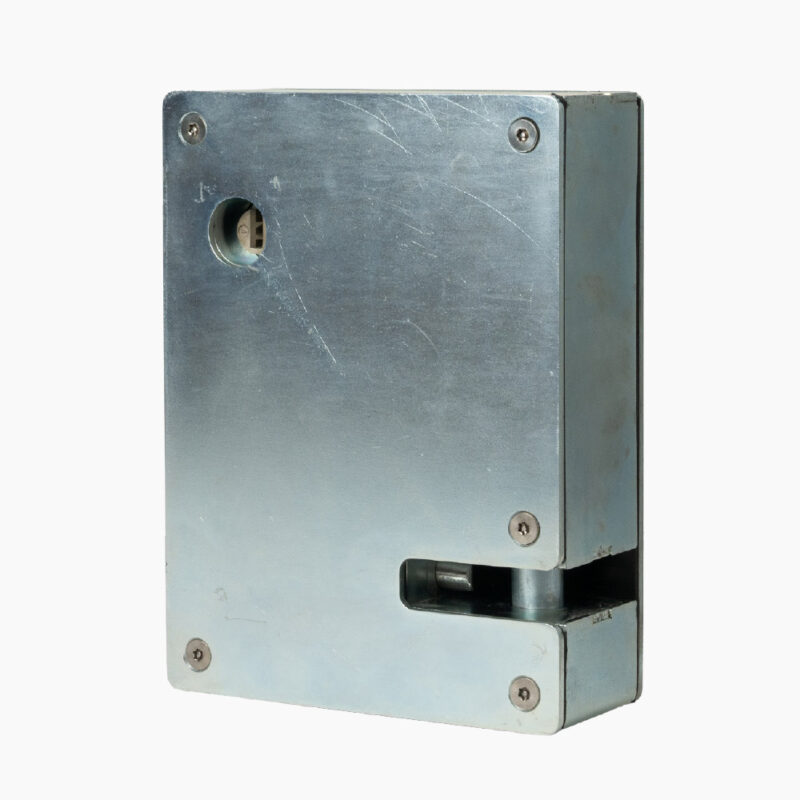51M Motor-Operated Deadlatch
The 51M is a motor operated lever tumbler lock designed for a variety of swing door applications such as inmate rooms, housing and dayroom perimeter doors, corridors and exterior doors.
Operation Details
The 51M deadlatch is a motor operated lock. When the door is in a locked closed condition, the latchbolt is deadlocked preventing the latchbolt from being retracted. Once the motor is energized, the deadlatch is lifted and the latchbolt is allowed to retract, unlocking the lock. The motor is equipped with a motor switch that allows for full cycle operation. Full cycle (M) operation uses a momentary contact to rotate the motor 360 degrees and unlock the lock.
Once the door opens, the latch will project and the lock will return to a locked condition once the door is closed. Full cycle typically uses the “Mechanical Holdback” feature as described below. The deadlock indicator switch provides monitoring of the deadlocked condition as well as the full projection of the latchbolt. When ordering, the full cycle lock is usually specified as having “Mechanical Holdback”, which allows the bolt to be retracted until the door opens.
51M Motor-Operated Deadlatch
- Jamb Mounted For Swing Doors
- Security: Maximum
- Key: Paracentric
- 24VDC or 120VAC Motor
Choice of Function
Mechanical Holdback (Standard) - Once unlocked, the latchbolt is held retracted until the door opens. The latchbolt then projects and allows the door to be slammed and relocked.
Non-Holdback (Optional) - Latchbolt retracts only through the full cycle operation.
51M Motor-Operated Deadlatch
Standard Features
- 120 VAC or 24 VDC Motor
- 3/4” Throw Latchbolt
- Deadlock Indicator Switch
- Heavy Duty Construction
- Adjustable Roller Bolt
- Corrosive Resistant Parts
- Internal Mounting Holes
- Manual Key Release
- Easy Wiring Field Plug
Component Specifications
- Motor - 120 VAC 60 Hz or 24 VDC
- Reinforced Backplate - 1/2” Steel Perimeter Guides
- 7 Gauge Steel - Zinc Plated Case & Cover
- Latchbolt - Hardened Steel Roller Pins
- Deadlock Lever - Zinc Plated Steel
- Operating Lever - 1/2” Zinc Plated Steel
- Springs - Stainless Steel
Keying
- Available 5 or 6 Tumbler
(See Handing Chart)
RELATED PRODUCTS
120E Solenoid-Operated Deadlatch
The 120E is a solenoid operated pin tumbler lock designed for a variety of swing door applications such as inmate rooms, housing and dayroom perimeter doors, corridors and exterior doors.
Operation Details
The 120E deadlatch is a solenoid operated lock. When the door is in a locked closed condition, the latchbolt is deadlocked preventing the latchbolt from being retracted. Once the solenoid is energized, the deadlatch is lifted and the latchbolt is allowed to retract, unlocking the lock. The deadlock indicator switch provides monitoring of the deadlocked condition as well as the full projection of the latchbolt. When ordering, the lock needs to be specified as having “Mechanical Holdback”, which allows the bolt to be retracted until the door opens, or specified as “Non-Holdback”, which only holds the latchbolt back as long as the solenoid is energized. The lock may be unlocked for an extended period of time by use of a maintained-contact switch.120M Motor-Operated Deadlatch
Operation Details
The 120M deadlatch is a motor operated lock. When the door is in a locked closed condition, the latch bolt is deadlocked preventing the latch bolt from being retracted. Once the motor is energized, the deadlatch is lifted and the latch bolt is allowed to retract, unlocking the lock. The motor is equipped with a motor switch that allows for a full cycle operation. Full cycle (M) operation uses a momentary contact switch to rotate the motor 360 degrees and unlock the lock. Once the door opens, the latch will project and the lock will return to a locked condition once the door is closed. Full cycle typically uses the “Mechanical Holdback” feature which allows the bolt to be retracted until the door opens. The deadlock indicator switch provides monitoring of the deadlocked condition as well as the full projection of the latch bolt.400E Solenoid-Operated Deadlatch
Operation Details
The 400E deadlatch is a solenoid operated lock. When the door is in a locked closed condition, the latchbolt is deadlocked preventing the latchbolt from being retracted. Once the solenoid is energized, the deadlatch is lifted and the latchbolt is allowed to retract, unlocking the lock. The deadlock indicator switch provides monitoring of the deadlocked condition as well as the full projection of the latchbolt. When ordering, the lock needs to be specified as having “Mechanical Holdback”, which allows the bolt to be retracted until the door opens, or specified as “Non-Holdback”, which only holds the latchbolt back as long as the solenoid is energized. The lock may be unlocked for an extended period of time by use of a maintained-contact switch.400MC Motor-Operated Deadlatch
Operation Details
The 400MC deadlatch is a motor operated lock. When the door is in a locked closed condition, the latchbolt is deadlocked preventing the latchbolt from being retracted. Once the motor is energized, the deadlatch is lifted and the latchbolt is allowed to retract. unlocking the lock. The half cycle (MC) operation uses a two position switch. The 1st switch position rotates the motor halfway and unlocks the lock. The lock will remain unlocked until the 2nd switch position rotates the lock returns to a locked condition with the latch projected, once the door is closed. Half cycle typically uses “Non-Holdback” as described below. The deadlock indicator switch provides monitoring of the deadlocked condition as well as the full projection of the latchbolt. The half cycle lock is usually specified as “Non-Holdback”, which holds the bolt back only during the half cycle position.800 Solenoid-Operated Gate Lock
Applications
The 800 is a solenoid operated lever tumbler lock designed for swinging or sliding fence gates.
Operation Details
The 800 deadlocking gate lock is solenoid operated. When the gate is in a closed condition, the deadbolt is deadlocked preventing the locking tongue from being retracted. Once the solenoid is energized, the deadlock lever is moved aside and the deadbolt is lifted. The lock is held electrically open until the locking tongue is returned to a closed position.
The deadlock indicator switch provides monitoring of the deadlocked condition as well as the full projection of the deadbolt. The slide bolt monitors the position of the lock’s tongue.
The lock may be unlocked for an extended period of time by use of a maintained-contact switch.
